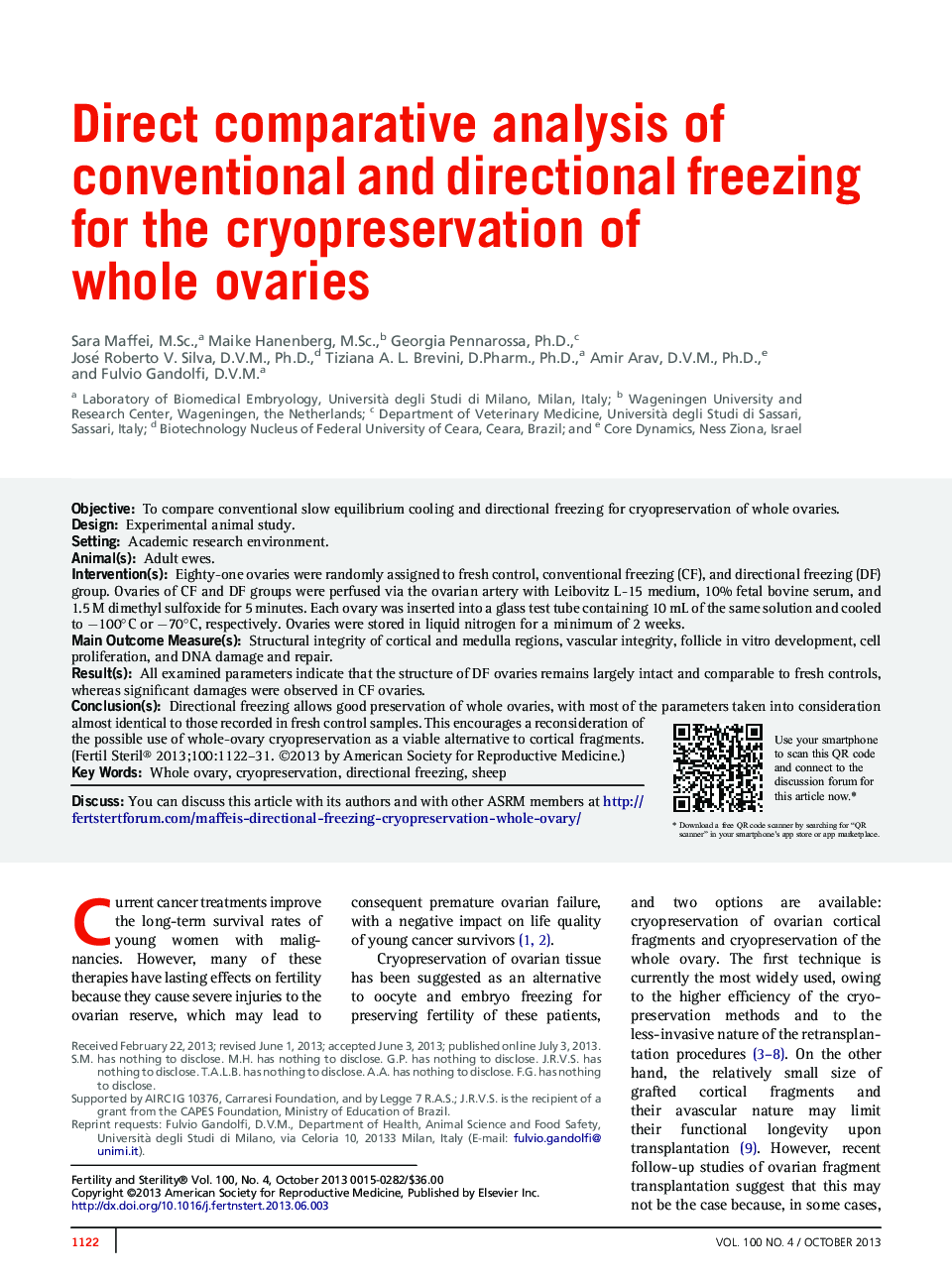| Article ID | Journal | Published Year | Pages | File Type |
|---|---|---|---|---|
| 6179057 | Fertility and Sterility | 2013 | 10 Pages |
ObjectiveTo compare conventional slow equilibrium cooling and directional freezing for cryopreservation of whole ovaries.DesignExperimental animal study.SettingAcademic research environment.Animal(s)Adult ewes.Intervention(s)Eighty-one ovaries were randomly assigned to fresh control, conventional freezing (CF), and directional freezing (DF) group. Ovaries of CF and DF groups were perfused via the ovarian artery with Leibovitz L-15 medium, 10% fetal bovine serum, and 1.5 M dimethyl sulfoxide for 5 minutes. Each ovary was inserted into a glass test tube containing 10 mL of the same solution and cooled to â100°C or â70°C, respectively. Ovaries were stored in liquid nitrogen for a minimum of 2 weeks.Main Outcome Measure(s)Structural integrity of cortical and medulla regions, vascular integrity, follicle in vitro development, cell proliferation, and DNA damage and repair.Result(s)All examined parameters indicate that the structure of DF ovaries remains largely intact and comparable to fresh controls, whereas significant damages were observed in CF ovaries.Conclusion(s)Directional freezing allows good preservation of whole ovaries, with most of the parameters taken into consideration almost identical to those recorded in fresh control samples. This encourages a reconsideration of the possible use of whole-ovary cryopreservation as a viable alternative to cortical fragments.
